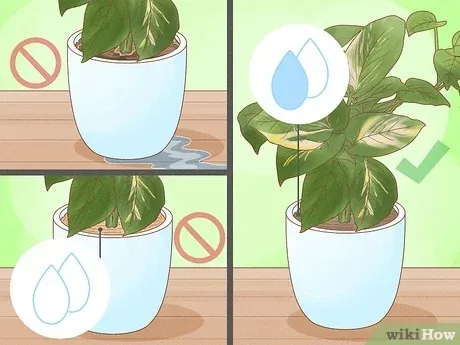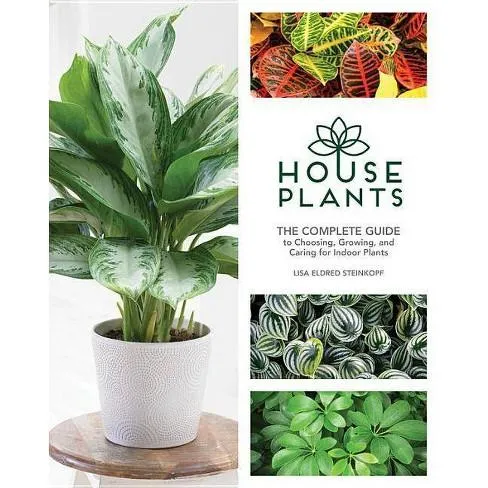A Guide to Indoor Tropical Plants: Questions Answered
If you typed “indoor tropicals” into your search engine, chances are you have some questions about caring for warm-weather houseplants. From my experience helping many plant parents over the years, here are answers to the top concerns people have when starting an indoor jungle.
Which Types of Tropical Plants Can Thrive Indoors?
Luckily, there are tons of tropical beauties well-suited for life inside. Some of the most popular and forgiving options include:
- Philodendrons – With their heart-shaped leaves and easy care, philodendrons like brasil and selloum are tropical plant all-stars. They thrive in low to medium light.
- Pothos – The heart of any vine collection is the nearly indestructible golden or marble queen pothos. They’re excellent air purifiers too!
- Spider plants – With their long green leaves and cute plantlets, spider plants are tropicals loved by beginners. Their tolerances make them tough as nails.
- Peperomias – These unusual foliage plants come in an array of patterns. Water-wise rubber plant peperomias can survive neglect.
- Dieffenbachia – Commonly called dumb canes, their bold leaf shades add drama. Though toxic, their well-behaved nature makes them popular.
How Do I Care for Tropical Plants Indoors?
While tropicals enjoy warm, humid environments outdoors, with some adjusting they’ll perform well inside too. Here are the keys to keeping them happy:
- Light – Most tropicals need medium to bright, indirect light. Put near an east or west window. Supplement with grow lights in winter.
- Water – Allow soil to partially dry between waterings, then soak thoroughly. Waterlogging causes root rot. Use the finger test.
- Humidity – Mist leaves and increase humidity near plants using pebble trays or humidifiers. High indoor heating saps moisture.
- Fertilizer – Feed regularly in spring and summer with a dilute, balanced liquid plant food.
- Prune – Shape, leggy stems for full growth. Cutting encourages bushier plants and blooms.
- Repot – Uproot and transfer to a slightly larger pot with rich, well-draining soil when roots fill the container.
What Common Problems Might I Face?
No gardens, indoor or out, are totally trouble-free. But keeping tropicals happy mostly involves avoiding a few pitfalls:

- Pests – Mealybugs, spider mites and scale can hitchhike in. Regular inspections and neem oil treatments prevent infestations.
- Root rot – Too much water leads to soggy, rotting roots. Let soil dry between waterings in well-draining pots.
- Leaf drop – Sudden foliage fall can indicate too little light or dry air. Boost humidity and move plants closer to windows.
- Nutrient deficiencies – Underfertilizing tropicals causes chlorosis or stunted growth. Feed regularly during growing seasons.
- Overwatering – Easily done indoors! Use your finger to check soil dryness before watering again.
With a little TLC, most tropical troubles can be avoided. Having healthy plants is basically about matching their needs to your care routines.
How Do I Choose the Right Plants for My Space?
When stocking up for an indoor jungle retreat, consider your particular conditions:
- Light levels – Pick plants suited to the brightness near your growing areas.
- Size – Account for mature plant dimensions to avoid overcrowding.
- Décor – Choose foliage and bloom colors that complement your style.
- Access to care – Easier care species if you travel often.
- Safety – Skip toxic plants around kids/pets.
- Hardiness – Opt for tough, forgiving tropicals if new to gardening.
With some research, I’m sure you can find a perfect match of tropical beauties for anywhere in your home. Don’t be afraid to experiment too – that’s half the fun!
What’s the Secret to Success with Tropicals?
In all honestly mate, keeping tropical plants is not as hard as their exotic image suggests. The key is understanding their preferences – and that mostly involves providing adequate light, water and humidity. Some brown tips or loss is normal too, so don’t stress the small stuff. With a little trial and error, your tropical oasis will start to thrive. Just go with the flow and enjoy the journey!

I hope this guide has answered your questions about caring for indoor tropical plants. Feel free to reach out if any other issues come up – I’d be pleased to help more. Happy planting!
Tropical Houseplant Care Guide
| Plant | Light Needs | Watering | Humidity | Fertilizer |
|---|---|---|---|---|
| Chinese Evergreen | Low to medium light | Water when top inch of soil is dry | Moderate | Spring-Fall, dilute liquid fertilizer every 2-4 weeks |
| Peace Lily | Medium to bright indirect light | Water when top inch of soil is dry | High | Spring-Fall, dilute liquid fertilizer every 2-4 weeks |
| Philodendron | Medium to bright indirect light | Water when top inch of soil is dry | Moderate | Spring-Fall, dilute liquid fertilizer every 2-4 weeks |
| Pothos | Low to bright indirect light | Water when top inch of soil is dry | Moderate | Spring-Fall, dilute liquid fertilizer every 2-4 weeks |
| Snake Plant | Low to bright indirect light | Water when top inch of soil is completely dry | Low | Spring-Fall, dilute liquid fertilizer every 2-4 months |
FAQ
-
What kinds of tropical plants can grow indoors?
There are positively many different types of indoor tropicals you can choose from. Palm trees, peace lilies, dieffenbachia, and pothos are simply some popular selections.
-
How much sunlight do indoor tropicals need?
While tropicals are used to strong sunlight, they will not do great with direct sunbeams all day long. Most like medium light, so somewhere with morning or evening sun is preferable. A south or east window generally works well.
-
What temperature is best for indoor tropicals?
Generally tropicals favor warm conditions. The perfect zone appears to be between 70 to 85 degrees Fahrenheit. However, they can tolerate temps a few degrees lower or higher for short time periods.

-
How often should I water indoor tropical plants?
The frequency of waterings depends on various elements, but as a basic guide, water when the top centimeter or so of soil feels dry. In the winter when light levels are lower, cut back watering to every 10-14 days.
-
What kinds of pots are suitable for tropical plants?
Terra cotta and plastic pots work great. Clay pots tend to dry out faster so you’ll be watering more regularly, while plastic holds moisture longer. Make sure there are holes in the bottom for good drainage.
-
Do indoor tropicals need fertilizer?
It appears most tropicals benefit from fertilizer during their main growing season, which is spring through fall. Use a product labeled for foliage plants and follow dosing instructions on the packaging. Fertilize monthly or according to the label.
-
How can I get my tropical plant to flower?
Providing the right conditions frequently encourages blooming. Make sure light levels, temperature, water and nutrients are adequate. Pinching or trimming back the plant may also stimulate flower production on some varieties. Tropical flowers tend to be stunning!

-
What are some common pests and diseases of indoor tropicals?
Mealybugs, scale, and spider mites occasionally bother tropical foliage plants. Check leaves regularly and wipe off any pests you spot with alcohol on a cotton ball. Overwatered soil can cause root rot, so allow the medium to dry between waterings. Proper care and a little TLC usually keeps tropicals healthy.
